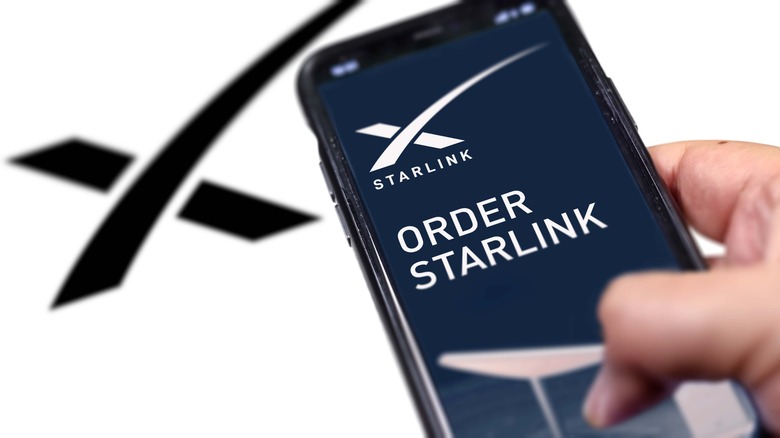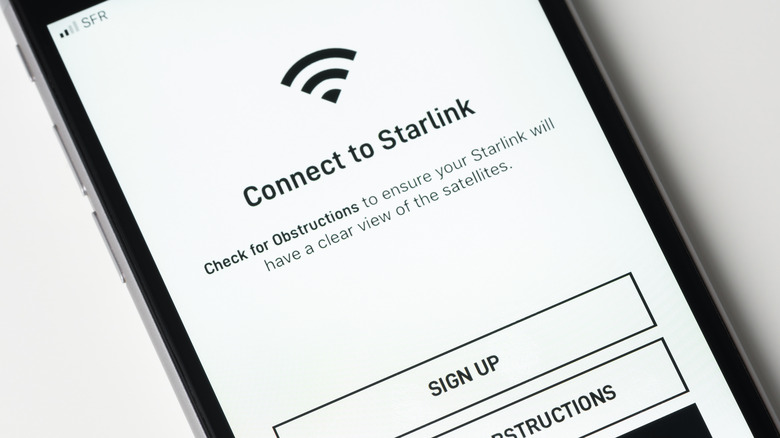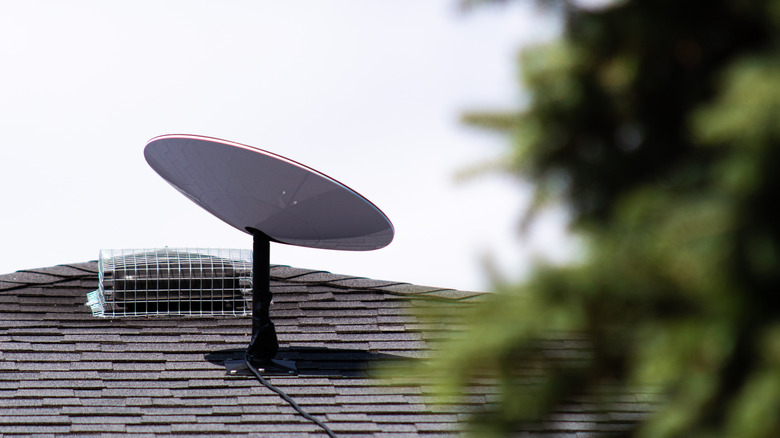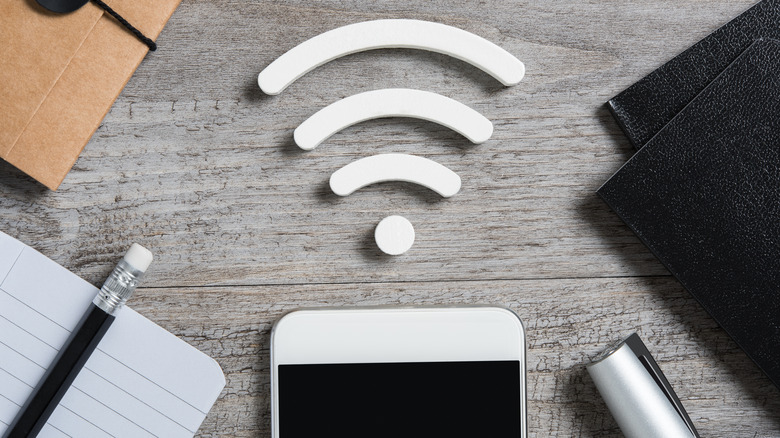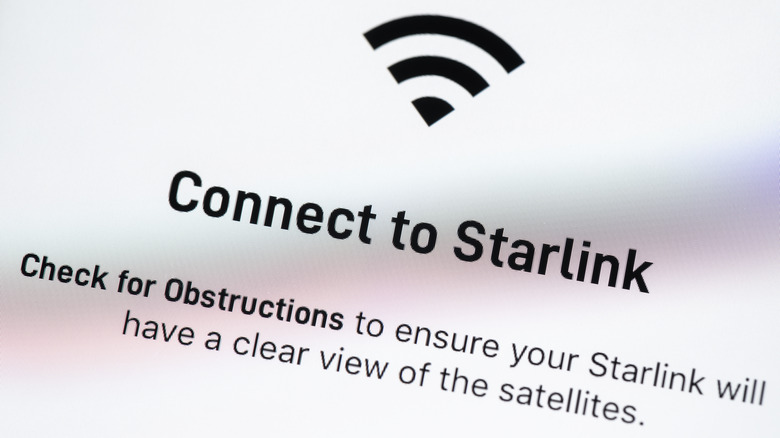The 5 Biggest Disadvantages Of Starlink Internet
SpaceX's Starlink launched its first batch of satellites in 2019, and since then, has provided internet coverage across 32 countries. As Space News stated, the company has plans to launch over 30,000 satellites into orbit in order to achieve its goal of providing internet coverage to all corners of the Earth. Currently, Starlink offers lightning-fast internet when compared to other satellite internet companies. However, despite the hype, there are also some downsides to its service to consider if you're thinking about choosing it as an internet provider.
Many of these disadvantages have more to do with limitations that are inherent to any satellite internet provider. Others issue are present simply because Starlink internet is new and still getting off the ground. That may change as Starlink grows and can offer more value to prospective users. With that being said, here are some of the current disadvantages of using Starlink internet.
Coverage is still lacking
Although Starlink is available across most of the U.S. according to its website, there are still quite a few areas where it's inaccessible due to lack of capacity. Besides the U.S., there are many other countries where Starlink won't be available until the next year, or even longer. These include Canada, much of Scandinavia, all of Asia and the Middle East, South America, Africa, and more. Starlink does plan to offer coverage to these countries, but it's going to take even longer.
This disadvantage isn't terrible, as it's mostly a waiting game for Starlink, which will be addressed as it continues to launch more satellites or get regulatory approvals in other countries. According to its site, many of the countries listed should have access by 2023. And, as its amount of satellites increase, even rural areas will eventually be able to access the internet where coverage was previously non-existent or spotty.
Self-installation is needed
Starlink home terminals and routers are meant to be self-installed, which can potentially save users money from installation costs. However, this can also pose problems for those that don't have any expertise with this type of project. Self-installing the terminals can be potentially dangerous as many need to climb up on rooftops to carry out the installation. If the user lacks technical know-how, it can turn into an especially arduous process trying to figure out how everything works. In the end, a user may end up paying someone to do it anyway.
Whether this is a disadvantage or not for you will depend on if you have the time and skills to install Starlink on your own. For those that can't fathom terminal self-installation or don't have a handy family member who could take up the task, another satellite internet company may be better suited as most of them will send out a technician to install the hardware.
Slower and less reliable than cable
Despite the fact that Starlink is one of the fastest satellite internet providers, it simply can't compete with cable internet. If speed is what you're looking for, cable internet is going to be much faster overall, as explained by Satellite Internet. While satellite internet excels at providing wide ranges of coverage, speed gets sacrificed. Starlink can provide internet at speeds of 50 to 250 MBs for $99 a month plus $499 for the installation kit, according to The Verge. This is a bit slower than typical cable internet, and more so than fiber internet.
Starlink also offers a premium package at $500 a month for speeds of 150 to 500 MBs, with an additional $2,500 fee for the antennae. This, however, is a cost-prohibitive barrier for those seeking discount internet, and this package is targeted more towards businesses and offices. Still, similar or better speeds are available at a much more affordable rate by top cable internet providers.
Obstructions can cause connectivity issues
Another aspect of satellite internet that can become an issue is obstructions. This could be anything that interrupts the signal coming from the satellite, Starlink included. The terminals need to be set up in an area with a completely clear sky overhead, or else they can become subject to a number of obstructions. This could be difficult if you live in a heavily populated or densely forested area. This can also make setting up the terminal more of a hassle if you're having trouble getting an unobstructed view of the sky.
Cable internet isn't as affected by problems like this as it doesn't need an open sky view to function properly. This is, however, a reason that Starlink could, in the future, be more suited to open, rural areas rather than cities where there are tall buildings and other objects that could be in the way of the sky.
Won't work as well in cities
With satellite internet, in large cities you'll usually find things can slow down quite a bit. This is because everyone in that city who is using the same provider is sharing bandwidth from the satellites passing over it. Since there are bound to be many more people in cities using the same provider, this impacts internet speed. In rural or suburban areas, where satellite internet can be more useful, this won't be as much of an issue.
Every type of internet provider can have its downsides, you just need to know if any of them are a deal breaker for you. When it comes to Starlink, it's a good option for those living in rural areas, especially when more coverage gets added. It's also a good option if you want to save a bit of money with self-installation, and generally it's not very pricy compared to other providers.
